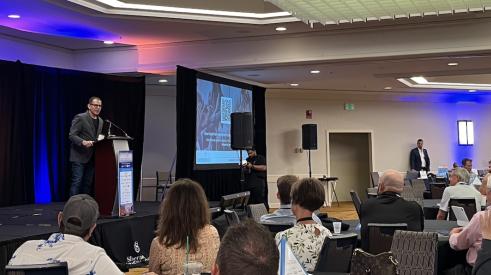One aspect of construction that causes anxiety for contractors is their duty to supply a warranty to the homeowner. The type of warranty required and its term is determined by state laws. Warranties may be express (written in the contract), implied (by common law), or statutory (set forth in a state’s statutes). In some cases, it’s difficult or impossible to modify or waive a warranty. In Massachusetts, for example, where I practice, the implied warranty of merchantability cannot be waived. This warranty says that when a product is sold, there is an implied warranty that it will function as designed.
Your state may have different requirements for remodeling and new construction. You can also decide to provide your clients with a warranty that goes beyond the minimum requirements. Either way, it’s important to define the warranty and its terms in your contract (see “Sample Limited Warranty Language”). For example, the start date should be clear. Does the warranty period begin at substantial completion, on the last day any work is done on the home, upon receipt of final payment, or at some other time? Your contract should state whether the owner’s failure to make all payments voids the warranty, and it should also make clear whether or not the warranty is transferable to a new owner.
Most projects include materials, fixtures, and other products that are warranted by the manufacturer. Your contract should exclude all of these from your warranty and pass through the manufacturer’s warranty to the homeowner (see sample language online at proremodeler.com/sample-warranty). In many cases, these warranties require that the homeowner register the item either online or by mailing a form provided by the manufacturer. Make sure your contract states the homeowner’s responsibility to make these registrations, then be sure to provide all of the materials that are necessary for them to do so.
If you set any kind of punch list or break-in period (see “Sample Warranty Punch List Procedure”), it should be clearly explained in your contract so as to eliminate confusion between punch list items and warranty items.
If your warranty period typically begins before a punch list is established, also make it clear that punch list work and repairs do not extend the warranty.
Finally, your contract should list any exceptions to the warranty—for owner-supplied materials or fixtures, for example—and should provide instructions about how the homeowner can arrange for warranty work (see “Request for Warranty Work”).
Sample Limited Warranty Language
Provided that final payment is timely, the Contractor warrants that for a period of five (5) years after the date of completion as defined herein, the materials and workmanship provided by the Contractor, as specified in the contract document, which are not covered by other sections of this Limited Warranty, will be free of defects in material and workmanship. The extent of liability under this Limited Warranty is limited to the repair of defects in workmanship and materials or the replacement of defective materials provided by the Contractor. The Contractor provides no warranty on any materials furnished by the Owner for installation.
Sample Warranty Punch List Procedure
PUNCH LIST: Thirty-day break-in period. During the first thirty (30) days after the dates of Substantial Completion, the Owner may note minor malfunctions or defects such as sticking doors, nail pops, etc. The Owner should maintain a list of these malfunctions and defects as they occur, and must submit in writing not later than forty-five (45) days after the date of substantial completion. All defects, which are determined to be covered under this warranty, shall be corrected within sixty (60) days. Any defect or malfunction that occurs after the thirty (30) day break-in period shall be classified as a “Latent Defect.”
LATENT DEFECTS: A latent defect is defined as a malfunction or defect in warrantable items, which becomes apparent after the thirty (30) day break-in period, but before the end of the warranty period. The Owner shall notify the Contractor in writing at the address set forth in this agreement of the existence and nature of any latent defects. Such notification shall be within ten (l0) days of the reasonable discovery of such defect. If a warrantable defect exists, it shall be corrected within thirty (30) days after the receipt of written notification by the Contractor.
Request for Warranty Work
Owner must notify Contractor in writing and forward to Contractor via email or certified mail within ten (10) business days of discovering any such problem to allow Contractor to remedy any such problem in accordance with the terms of this Contract. Owner shall allow any Contractor, employee, or independent Contractor of Contractor’s choosing the right to remedy any such problem that may arise from workmanship or defects, and any refusal to do so by Owner shall be considered to be a breach of the terms of the Contract.
Exclusions From Limited Warranty
The Contractor doesn't assume responsibility for any of the following, all of which are excluded from the coverage of this Limited Warranty:
Appliances, fixtures, and equipment that are consumer products other than the Contractor's own workmanship and materials. All warranties for equipment supplied by the Contractor under this Agreement shall be those given by the manufacturers of such equipment, which shall be and are hereby passed through directly to the Owner(s). Under such manufacturers’ warranties, the Owner(s) may be required to register or mail in a warranty card to give other evidence of Ownership and use of such equipment in order to activate such warranties. The Owner(s)’s failure to mail in or register such documentation voids the manufacturer’s warranty and shall not create any responsibility for the Contractor to warranty such equipment.
Additional articles about warranties and warranty work
---
Andrea Goldman is principal of Goldman Law Group, in Newton, Mass. Her firm focuses on construction, business, landlord/tenant, and employment matters. agoldman@goldmanlg.com
This article is solely for informational purposes. It does not constitute legal advice and does not create an attorney-client relationship.

Most states require a warranty. Here are some guidelines about what it ought to cover
Add new comment
Related Stories
What's Beyond the Hammer?
Working with Brian Gottlieb on the book Beyond the Hammer provided a masterclass on how to build an aligned team
Real AI Applications For Remodelers
Tech-forward remodeler Michael Anschel shares how he uses artificial intelligence in his business.
How to Eliminate Boring, Languishing Meetings
Leff Design Build ensures maximum productivity and efficiency through these straightforward methods
5 Counterintuitive Strategies to Improve Your Business
Follow these strategies to inspire employees, instill trust, and beat the competition
Couple Act As Much More Than General Contractors
How LBR Partners uplifts and educates their Spanish-speaking trade partners
Artificial Intelligence Meets Design
An architect looks at the pitfalls of using technology to take over human design tasks
How to Correctly Hire for Business Growth
Refloor CEO Brian Elias shares exactly how his company hires the correct people for the correct seats
Managing Business Risk to Embrace Risk
As remodelers, our product is risk. Yet within our businesses, we fear risk. Just like with your projects, if you plan accordingly, your risk comes with reward
What the Most Successful Remodelers are Doing Right Now
Industry advisor Mark Richardson shares the answers to his three most asked questions: What's the remodeling market like? What are other remodelers doing? How do I measure up?
Becoming an Employee-Owned Design-Build Company
One remodeler’s cancer diagnosis changed the way he approached succession planning













